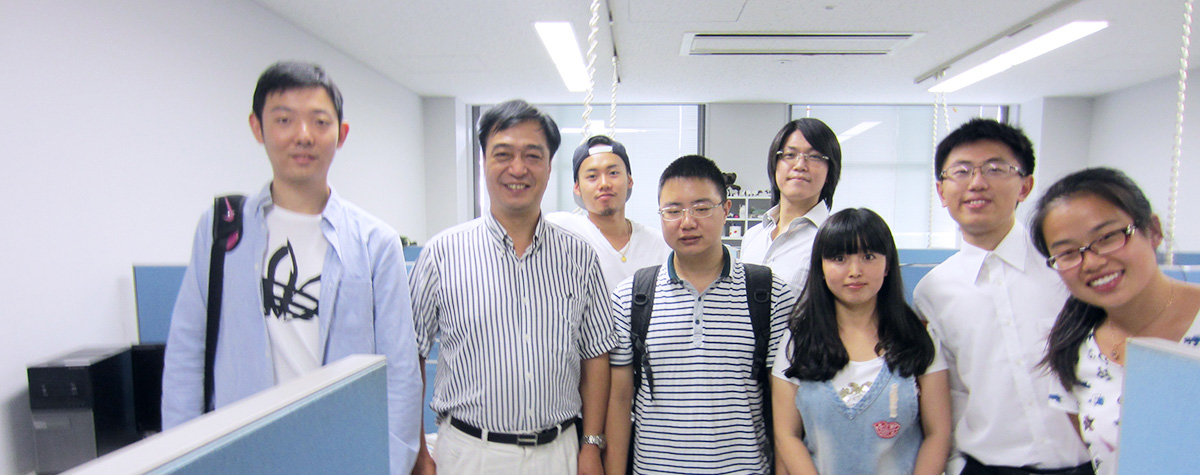Index of professors in this research area
Prof. Mina AKAISHI
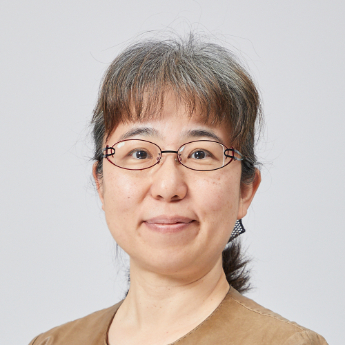
Information Compilation Lab
Mina AKAISHI
Professor (Computer Science, Graduate School)
Ph.D. (Engineering)
Research area:
- Narrativity based Information Access
Mina AKAISHI received the B.E., M.E. and Ph.D degrees in Electorical Engineering from Hokkaido University in 1990, 1992 and 1995 respectively. Before joining Hosei University, she was an Associate Researcher at Shizuoka University and Hokkaido University, and an Associate Professor at the University of Tokyo.
Prof. Akira SASAKI
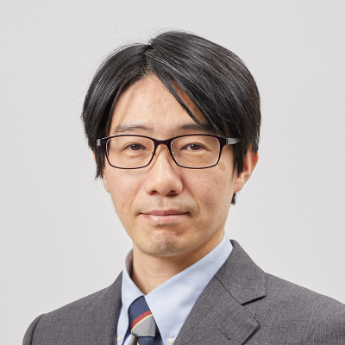
Programming Language Lab
Akira SASAKI
Professor (Computer Science, Graduate School)
Ph.D. (Science)
Research area:
- Programming Languages
- Domain Specific Languages
- Attribute Grammars
Akira SASAKI received his BSc, MSc and Ph.D in Science from Tokyo Institute of Technology, Japan, in 1994, 1996, and 2004, respectively. He was a research associate of The Institute of Medical Science, The University of Tokyo (2003.1-2005.9), and of Interdisciplinary Graduate School of Science and Engineering, Tokyo Institute of Technology (2005.9-2006.3). From April 2006, he joined the Faculty of Computer and Information Sciences at Hosei University, Japan as an Associate Professor.
His research interests include programming languages, programming language processors, and programming environments, especially compiler compilers, attribute grammars, and systematic debugging. He is a member of ACM, and the Japan Society for Software Science and Technology.
Message
We study domain specific language (DSLs), programming languages specialized for developing software on specific fields. Especially, our research focuses on the methodologies to design and to implement DSLs in efficient ways.
Prof. Yuji SATO
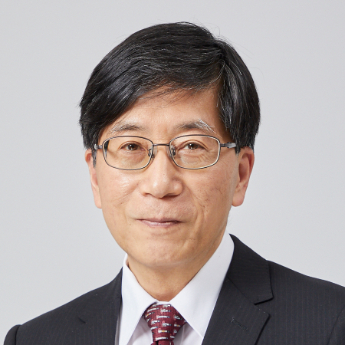
Intelligent Evolutionary System Lab
Yuji SATO
Professor (Computer Science, Graduate School)
Ph.D. (Engineering)
Research area:
- Evolutionary Computation
- Machine Learning
Yuji SATO was born in Tokyo, Japan on July 3, 1957. He received the B.E. degree in applied physics and Ph.D. degree in Electrical engineering from the University of Tokyo, Japan in 1981, 1997, respectively. From 1981 to 2000, he was with the Hitachi Ltd., Tokyo, Japan, where he was engaged in research and development of computer-aided design automation systems, an intelligent sub-processor for hardware emulation, and a high-performance neuro-processor of digital neurons. From 1992 to 1995, he was also temporarily transferred to Real World Computing Partnership, Tsukuba, Japan, where he was engaged in research of genetic algorithms for time-series problems. In April 2000, he joined the Faculty of Computer and Information Sciences at Hosei University, Japan, as an Associate Professor, and then a Professor since April 2001. From 2007 to 2008, he was a visiting scholar at Illinois Genetic Algorithms Laboratory (IlliGAL).
His current research areas include: computational intelligence, evolutionary computation on many-core architecture, and evolution of machine learning techniques in design.
He is a member of the IEEE Computer Society, IEEE Computational Intelligence Society, the ACM/SIGEVO, the Japanese Society for Evolutionary Computation, and the Information Processing Society of Japan.
Message
My research and that of my graduate students focus on distributed genetic algorithms on many-core architecture, computational intelligence in Games, and evolutionary computation for real-world applications. I want to bring up talented people with the creatively.
My personal interests include playing tennis, traveling, and gardening.
Prof. Soichiro HIDAKA
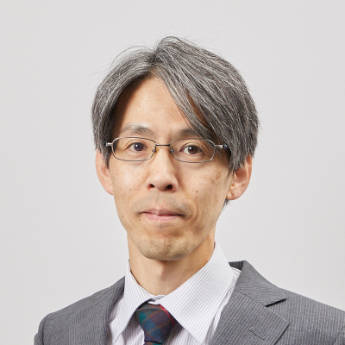
Infrastructure Software Lab
Soichiro HIDAKA
Professor (Computer Science, Graduate School)
Ph.D. (Engineering)
Research area:
- Programming Languages
- Program Transformations
- Bidirectional Transformations and
their Applications to Model Driven Engineering
Soichiro Hidaka received his bachelor’s degree in engineering and Ph. D in Engineering from the University of Tokyo in 1994 and 1999. He had involved in research projects such as parallel programming language implementation, micro-kernel based operating system and document processing system. He is interested in studies on infrastructure software systems and particularly on database programming languages. Recently he has been conducting research on bidirectional graph transformations that is intended to facilitate bidirectional model transformations. He had visited AtlanMod team in Ecole des Mines de Nantes for 1 month starting from Apr. 21 2010, and attended seminar on Bidirectional Transformations “”bx”” at Dagstuhl in January 2011. He served as a member of NII Shonan Meeting steering committee until March 2016. He is a member of Bidirectional Transformations steering committee.
He is a member of IEEE, ACM, Japan Society for Software Science and Technology (JSSST), Information Processing Society of Japan (IPSJ) and Institute of Electronics, Information and Communication Engineers (IEICE).
Message
Transformations can be seen in various situations in information processing. For example, a query can be considered as a transformation from source (database) to target (result/view). It is desirable for the updates to be propagable not only from source to target, but also in the opposite direction. However, the latter — propagating updates to the source — is not so obvious. Bidirectional transformation achieves this propagation, and we have recently proposed and implemented a compositional approach to bidirectional transformation on graphs. One of our applications of the bidirectional graph transformation is to support consistent model transformation in model driven software development.
Soichiro Hidaka is leading a research subproject on bidirectionalization of graph transformation as a part of The BiG (http://www.biglab.org) project on “”Linguistic Approach to Bidirectional Model Transformation””, whose focus is on the above applications. The project is establishing graph transformation framework for model transformation by representing models as graphs.
Prof. Runhe HUANG

Artificial Intelligence Lab
Runhe HUANG
Professor (Computer Science, Graduate School)
Ph.D. (Computer Science)
Research area:
- Evolutionary Computation
- Machine Learning
Runhe HUANG received her B.Sc. in Electronics Technology from the National University of Defense Technology, China in 1982, and her Ph.D. in Computer Science and Mathematics from the University of the West of England, UK in 1993. She worked at the National University of Defense Technology over the period 1982-1988. In 1988, she received a Sino-Britain Friendship Scholarship for her Ph.D. study in the U.K. After receiving her Ph.D., she worked at the University of Aizu from 1993 to 2000. She has worked at CIS since 2000.
Dr. Huang has been working in the field of Computer Science and Engineering for nearly 30 years. Since 1982, her research fields have included Computer Supported Collaboration Work, Artificial Intelligence and Multi-agent Systems, Multimedia and Distributed Processing, Computational Intelligence Computing, Ubiquitous Intelligence Computing, Cyberworld Computing, and Aware Computing.
Dr. Huang is a member of IEEE and ACM. She has been active in various academic societies. She has published more than 120 academic refereed papers in the international conferences and journals. She received the Best Paper Award from the 2000 International Conference on Information Society in the 21st Century: Emerging Technologies and New Challenges.
Message
With rapid developments of the Internet and Web technologies, the 21st century is a networked digital information era. Accompanying this era, a new world (Cyberworld) is on the way to be brought out. It is an interesting and a full of mystery world. It is the time for us to discover mysteries and make inventions, in particularly, in the fields of world modeling and finding scientific and social laws for guiding people’s communications, collaborations and educations in this exciting world. Let us face the challenges and enjoy inventions in the 21st century!
My hobby is reading, traveling, cooking, gardening, programming and badminton.
Prof. Hiroshi HOSOBE

User Interface Lab
Hiroshi HOSOBE
Professor (Digital Media, Graduate School)
Ph.D. (Science)
Research area:
- User Interfaces
- Information Visualization
- Computer Graphics
- Constraint Programming
Hiroshi Hosobe received his bachelor, master, and doctoral degrees from the University of Tokyo in 1993, 1995, and 1998 respectively. After serving as a JSPS Postdoctoral Research Fellow at the University of Tokyo and as a Research Associate at the National Center for Science Information Systems, he joined the National Institute of Informatics as a Research Associate in 2000, where he worked as an Associate Professor from 2004 to 2013. In 2005, he spent two months as an Invited Professor in the LINA laboratory at the University of Nantes. He joined Hosei University as a Professor in 2013. He was presented with the Takahashi Award in 2003 by the Japan Society for Software Science and Technology and with the Best Paper Award in 2003 by the 6th Pacific Rim International Workshop on Multi-Agents.
Message
Our lab is studying how to develop software systems, especially, with visual and interactive properties. Although such systems are becoming increasingly important and widespread, the method of their development has remained unchanged for over twenty years; people have been using object-oriented imperative programming languages (e.g. C++, Objective-C, and Java) for this purpose. We are tackling this situation by adopting mathematical approaches such as constraint programming. We welcome your participation in our activities.
Prof. Jianhua MA
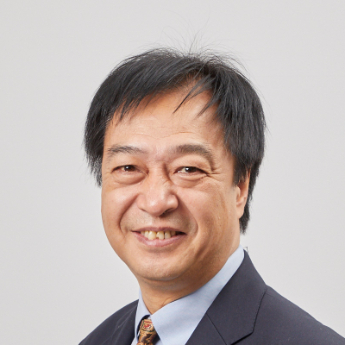
Ubiquitous Computing Lab
Jianhua MA
Professor (Digital Media, Graduate School)
Doctor of Information Engineering
Research area:
- Ubiquitous Network and Computing
- Smart Object, Space and Service
- Autonomic and Trusted System
Jianhua MA received his B.S. and M.S. degrees of Communication Systems from National University of Defense Technology (NUDT), China, in 1982 and 1985, respectively, and the PhD degree of Information Engineering from Xidian University, China, in 1990. He has joined Hosei University since 2000, and is currently a professor at Digital Media Department in the Faculty of Computer and Information Sciences. Prior to joining Hosei University, he had 15 years’ teaching and/or research experiences at NUDT, Xidian University, and The University of Aizu, Japan.
He is teaching the courses of Java Programming, Computer Networks, Multimedia Technologies and Applications, Ubiquitous Computing, Advanced Networking and Computing, CIS Project A/B, and Research Seminars on Advanced Cyber and Ubiquitous Computing.
His research from 1983 to 2002 covered wireless communications, data encryption, speech processing, multimedia QoS, 1-to-m HC hyper-interface, graphics ASIC, e-learning and virtual university, CSCW, multi-agents, Internet audio/video, mobile web service, P2P network, etc. Since 2003, he has been devoted to what he called Smart World and Hyper World pervaded with smart physical u-things, characterized with Ubiquitous Intelligence (u-Intelligence, UI) for u-Services with UbiSafe guarantee. The u-intelligence, actually the whole ubicomp/percomp, should be based on the systematic study of the u-Things and Cyber-Individuals (Cyber-I) in the integrated Cyber-Physical-Social World.
Dr. Ma has published over 200 papers in journals and proceedings, edited over 10 books, made over 15 journal special issues as a Guest Editor, and served many international journals as an Editor-in-Chief or editorial board member. He has organized a lot of conferences as one of chairs. He is a founder of Int’l Conf. on Ubiquitous Intelligence and Computing (UIC), Int’l Conf. on Autonomic and Trusted Computing (ATC), IEEE Conf. on Cyber, Physical and Social Computing (CPSCom), and IEEE Conf. on Internet of Things (iThings). He is a Chair of IEEE CIS Task Force on Autonomic and Trusted Computing, and a co-founder of IEEE Task Force on Ubiquitous Intelligence and Computing.
Access Laboratory to know more about him.
Message
Cyber world is a completely new digital space supported by Internet, Web, cloud, IoT and so on. It is very necessary to find out essential features and develop novel technologies to deal with digital explosions of information, connection, service and intelligence in this new world. The systematic study is important to cover both advanced technological aspects and human factors to realize the harmonious symbiosis of humans, computers, and things in an emerging cyber-physical hyperworld.
